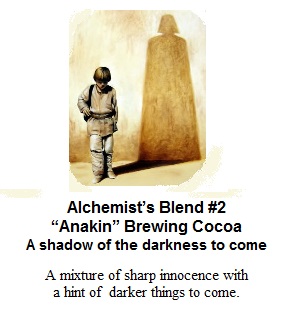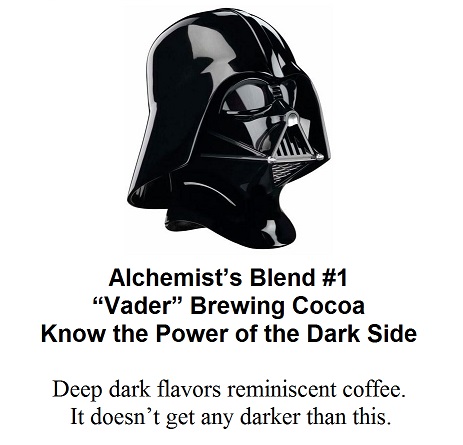From reading your forum and my own experience, your write up on how to tweak the Behmor programming is still confusing. Could you at least add Behmor instructions to each bean. And suggest how far over or under you can go and what it will do to the flavor. I know it should all be done by nose, but after over a hundred batches I still don't trust my nose to tell me much.
Let’s talk about roasting a bit, why I don’t give exact profiles for each cocoa bean, and why I tend to only give oven profiles.
There are 5 profiles in the Behmor. Each one applies heat a little more gentle as the number goes up. i.e. Profile 1 is 100% on. Profile 2 reduces the heat about 75% in. Profile 3 is a gentle ramp. In addition, you can add or subtract time from each profile. If you add the time before the roast starts, it stretches the entire profile out proportionally. If you add it after the roast starts, it tacks it onto the end.
Yeah, that can be a touch confusing, but this is really what you need to know. I don’t believe (in the sake of cocoa) that it makes any difference from a flavor standpoint when you add it. How far you take to roast over shadows any subtle nuance that might (or might not) be introduced by when you add time.
That all said, here is the nugget of why I don’t list profiles. If you took one bean, roasted it on each profile until you hear a bean pop, you have 5 profiles. Let’s say increases or decreases only have noticeable effects in 2 minute increments. If we go 2 over and 2 under (5 each) we now have 15 profiles. And if we add in that we can add the time before or after the roast starts we have doubled the profiles to 30. Setting aside I don’t have the time to make 30 batches of chocolate for each bean, the telling point here is that ALL of the chocolate would be good and in a group of people, I am willing to bet each chocolate would be picked either based on ‘favorite’ or ‘tasting the same’ across the board.
The fact is is that the Behmor has great profiles, they all work and all taste good, and there is no one best profile. It comes down to taste of the individual. And learning what you like. But my preferences and tastes are not your tastes. The best I can do is give you tools. But those tools are not exact profiles. The tool is how to learn which profile you like, and I think I can see I have been negligent there. So let’s get into it.
But first, a quick note on oven profiles; You notice those I give a lot more of. The reason is that because there is SO much control there, you have much more of an ability to over or under roast. I’m trying to get you in the ball park with those. With the Behmor, ANY profile will get you in the ball park.
To learn, you HAVE to keep notes. Keep a log. Otherwise it will just all get jumbled in your head and you will end up roasting 100 batches and still not know what you like.
So I WILL give you an exact profile. But note that I am NOT saying it is the best profile. Just your starting profile.
This is for ANY cocoa bean.
Profile 1
16 minutes
2 lbs cocoa
Start.
Let the roast naturally end at 16 minutes, but make notes about what you smell, at what times, and when you hear pops and at what times. These are critical for associations later on.
Now, make chocolate out of it. Save some. Label it. And roast up another batch.
This time, I want you to roast the SAME BEAN, on the SAME PROFILE and increase the roasting time 1.5 minutes. Again, make notes about what you smell, at what times, and when you hear pops and at what times.
Make chocolate out of it. Save some. Label it. And roast up another batch.
In this batch, add ANOTHER 1.5 minutes. 19 minutes. Rinse and repeat about notes and making chocolate.
Oh, and for goodness sake, use the same recipe when making your chocolate. Personally I like 70% cocoa, 5% cocoa butter and 25% sugar. But you can do whatever you want as long as you like it. 50% cocoa, 10% cocoa butter and 40% if you like. Whatever.
Now, it is taste time. And it’s no more complicated than that. I’m not going to ask you to make crazy notes, and come up with flowery language. Just eat some, rinse your mouth, and eat the next….and rinse and repeat (literally). Really, the ONLY thing you are looking for here is which do you like best IF ANY?
Hopefully, one will tickle your fancy more than another. Make that note in your roasting log. Was it a toss up between two? Then maybe you want to try a fourth batch right between those two and taste all three together again. Maybe you like the heavier roast, but think that it would be better with more roasty, nutty flavors? Then try that. Add another 1.5 minutes. Oh, but maybe you want it a touch more sharp and bright and fruity? Then reduce it 1.5 minutes.
Are you getting the picture? You are zeroing in one two things. First off, what you like in general, and maybe where you like your roast level…but don’t make too broad of assumptions here. What may be fine for Peru is not what you like in Ecuador or Madagascar.
Now that you have what you have determined which roast level you like, it’s time to see which profile (IF ANY) you like better. Move on to P2 and roast it to the same SMELL. This is why you took notes. The new profile may and probably will take longer but by and large, roast level correlates pretty well to aroma.
Notes; Chocolate; Do it again for P3.
And in case you find yourself just not being able to distinguish aroma, it is perfectly ok to base your EOR (end of roast) on cracks. Namely, where did you hear the first or second and how did that relate to when you stopped the roast?
It is taste time again. Taste these two new chocolates, plus the one you picked from the first set. No flowery notes needed. Just which one do you like best? What? You really can’t tell much difference? That’s ok. Or maybe you do. You like P2…but think a touch more roast would be good? TRY IT!
Yeah, it’s kind of like a maze. But with your notes, you have a much better chance of not getting lost. You can go back if you need. But without notes, without taking note of specific information, it’s like driving around a city, trying to get to a location you have never been to and being surprised when you can’t get there. You basically have to know where you are going (getting the chocolate you like) and where you have been (roast log) or you will just drive around in circles never getting to your destination. And I will conclude with one final note about that destination with yet again another analogy.
You are planning a trip. You say give me exact directions to the best country, with the most beautiful city, with the greatest restaurant and tell me what to order so I can have the best meal of my life.
How in the world am I supposed to do that? The key is that I don’t know what you like and what I like could well be something you don’t. But that is what you are asking when you want exact profiles (and beans choice and an exact recipe).
This whole endeavor is a journey. And for me at least, it’s all about the journey, not the destination. Sure, I want good chocolate at the end, but it’s the process I love, and what I hope to instill in you - along with some of the tools so you can enjoy the trip and not wander aimlessly, lost in the maze.
I’ll end with a variant of a quote a friend of mine uses about roasting and brewing his own coffee.
“Ultimately the quest for Chocolate Nirvana is a solitary path. To know, I must first not know. And in knowing, know I know not. Each Personal enlightenment found exploring the many divergent foot steps of those who have gone before.”



 Finally, keep an eye out for a bunch of new hobby grade molds. Great for getting started and for gifts.
Finally, keep an eye out for a bunch of new hobby grade molds. Great for getting started and for gifts.


 As I am wont to do, I have gone off and broken a couple of the ‘rules’ for chocolate. I’ve blended wonderful single origin beans. I have roasted them VERY dark. I have ground them extra fine. And I have produced a dark, tempting elixir. And make no mistake; it is stronger than most of the ‘lighter’ brews both in color and flavor. Strong roasted notes, not unlike coffee. I love coffee, and I when I’m not sipping coffee, this fits the bill just great. But it’s not just ‘dark’. And it certainly isn’t burned. It’s full of spice and chocolate notes. And lest you fear I’ve roasted all the goodness out of it, (and yes, this is just anecdotal evidence) the ‘buzz’ is still there. Fully! And if anything, it may be greater than the lighter stuff since it is extracting more (just note that alluring color).
As I am wont to do, I have gone off and broken a couple of the ‘rules’ for chocolate. I’ve blended wonderful single origin beans. I have roasted them VERY dark. I have ground them extra fine. And I have produced a dark, tempting elixir. And make no mistake; it is stronger than most of the ‘lighter’ brews both in color and flavor. Strong roasted notes, not unlike coffee. I love coffee, and I when I’m not sipping coffee, this fits the bill just great. But it’s not just ‘dark’. And it certainly isn’t burned. It’s full of spice and chocolate notes. And lest you fear I’ve roasted all the goodness out of it, (and yes, this is just anecdotal evidence) the ‘buzz’ is still there. Fully! And if anything, it may be greater than the lighter stuff since it is extracting more (just note that alluring color).